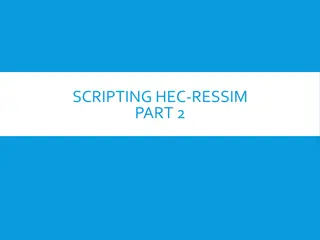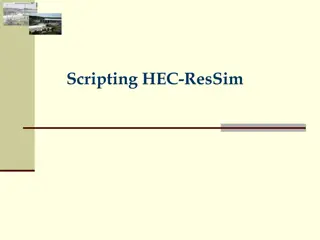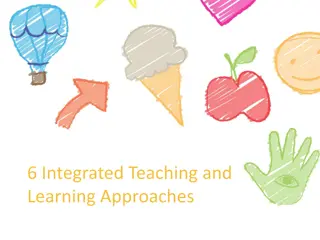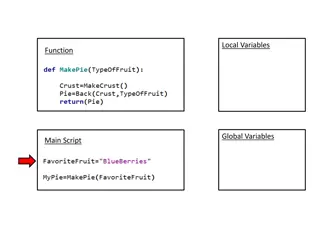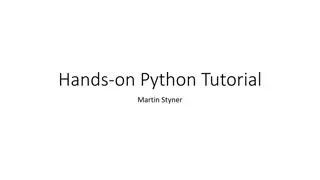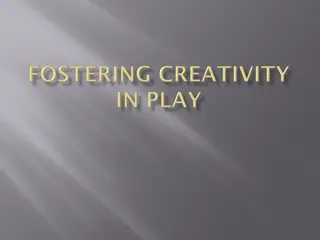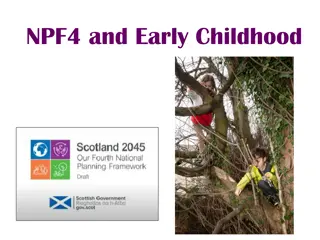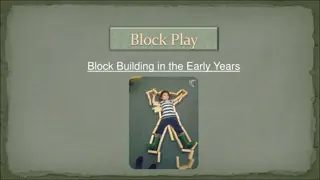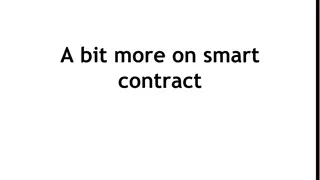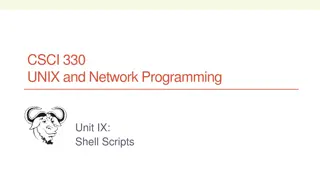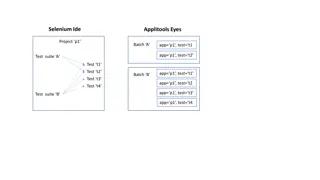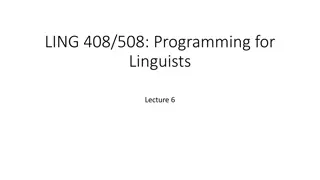Understanding Play Scripts for Children
Explore the fundamentals of play scripts, including the role of prefixes in altering word meanings, the features of play scripts, and examples of popular plays. Dive into the significance of cast lists, scene descriptions, and stage directions in creating engaging scripts for young actors. Uncover the structure and purpose of play scripts, and discover the essence of utilizing prefixes for language enrichment.
Download Presentation

Please find below an Image/Link to download the presentation.
The content on the website is provided AS IS for your information and personal use only. It may not be sold, licensed, or shared on other websites without obtaining consent from the author. Download presentation by click this link. If you encounter any issues during the download, it is possible that the publisher has removed the file from their server.
E N D
Presentation Transcript
Grammar of the Day Grammar of the Day Prefix Prefixes go at the beginning of words. This changes the meaning of the word. Prefix Prefixes are a group of letters that change the meaning of a word when they are added to the start. Most prefixes mean a similar thing when they're added to different words. un usually means not. For example, unhappy, unlocked, unfair dis and mis usually have negative meanings. For example, disagree, disobey, misbehave, mislead WATCH VIDEO! What are prefixes? - BBC Bitesize
Success Criteria I know the features of a play script. include a cast list of characters? give a short description of each scene s setting? use a narrator to briefly set the scene for the audience? write the speaker s name on the left? use a colon after the speaker s name? write dialogue (speech) without inverted commas? put stage directions in brackets? use the present tense? What is our continuous success criteria? Using capital letters. Using punctuations (. - , !) Use simile and metaphor Varied sentence structures Use tier tier 1 and 2 vocabulary
Monday 8th February 2021 LO: to identify the features of play script. What is a play script? A play script is a piece of writing that is written for the stage. Within a play script, there are characters and acts split into individual scenes that children can learn and act out with one another. Play scripts contain different features to prose or poetry. They're written in a totally different format which is mainly dialogue. Any description is added in stage directions, but usually only to inform actors how their character should be behaving. It also informs set designers and directors how the stage should look. Watch video! https://www.bbc.co.uk/bitesize/topics /zsn4h39/articles/z24vjty
Play Script Can you think of any plays? What are they?
Success Criteria Success Criteria I know the features of a play script. What is our continuous success criteria? Using capital letters. Using punctuations (. - , !)
Title The name given to the play script. Annie Wicked Macbeth EastEnders Romeo and Juliet
Character List Found at the beginning of a play script. It tells us what characters are in the play. Sometimes it gives us a description of the character and their characteristics.
Stage directions Used to set the scene. They are an instruction. They tell an actor what they should be doing in that scene (their actions) or how they should talk. Normally presented in brackets or in italics.
Setting the scene Gives the actors information/a description about the scene. It is a dark, cold night and Mel and Sid are sitting on a green park bench. The street lights are dim and the sound of the traffic can just be heard in the background. Where it is. SCENE ONE: Daddy bear comes into the house. Mummy and baby follow him. They are tired after their morning walk in the woods. What it is like (weather). Who is there.
Dialogue The speech between characters. The character s names are on the left hand side of the page. No speech marks. The speech is separated by a colon (:)
Scenes Like chapters in a book, it is a different part of the play. Used when you want to change the location or the time the dialogue is taking place. At the start of a new scene, it is important to say where and when it is happening.
Your task is to write the play script below and find as colour the play script features in the text here? Scene number and title Scene 7 A Mad Tea Party The Mad Hatter, Dormouse and Hare are sitting at a table having afternoon tea. Lost and lonely, Alice continued towards the sound. She didn t know what to expect when she reached a clearing Narrator: Setting description (Alice enters the scene, stage left) (starts for a moment, pauses and a broad grin appears across his face. He gets up out of his chair and walks across the table towards Alice) Speaker s name, followed by a colon (:) Mad Hatter: It s you. (exasperated) (gasps and throws his hands against his head) Dormouse: No it s not! Hare brought us the wrong Alice! Hare: It s the wrong Alice! You re absolutely Alice, I d know you anywhere. Stage directions in brackets Mad hatter: (to the rest of the characters at the table) I d know him anywhere! (Dormouse and Hare laugh manically) Speech without inverted commas! click the different features to show the answers Well, as you can see we re still having tea. You re terribly late you know naughty. I m incredibly intrigued. Alice: Present tense
Features of a play script



